






















San José houseless residents are facing new challenges with an updated ordinance passed unanimously by SJ City Council
By Alina Ta SENIOR STAFF WRITER
San José City Council voted unanimously in favor of increasing the period where unhoused residents can be arrested for a misdemeanor if they lay down on the sidewalk or a bench.
Deputy Chief Gina Tibaldi for the San José Police Department said the police department wanted city council to amend an ordinance known as Municipal Code Section Chapter 10.10 of Title 10.
The ordinance prohibits sitting and lying down with or without a blanket, chair, stool or other items on sidewalks in designated areas of the downtown region between 10 a.m. and midnight, according to a memorandum from the city of San José.
The purpose of the ordinance is to keep sidewalks free from obstructions and make Downtown San José a safer place to walk, according to the same source from the city.
“Many people who work in the downtown businesses walk to work from their homes or from nearby transit stations and off-site parking lots,” Tibaldi said. “Students commuting or walking to downtown schools use the sidewalks in the early morning hours.”
Tibaldi said the police
department wanted the city to shift the start time from 10 a.m. to 8 a.m. closer to when businesses and schools start for the day.

These designated areas are sidewalks located in a region bordered by Route 87, Julian Street, Fourth Street and Interstate 280, and sidewalks on Santa Clara Street between Fourth and Tenth Street, according to the same memorandum.
Alex Stettinski, the CEO for the San José Downtown Association,
to a report from the U.S. Department of Housing and Urban Development.
However, Stettinski also said he wants the city to focus on outreach and provide more social
solution ... Visitors (need to) feel comfortable and our most vulnerable residents (need to) receive the support they deserve.”
Close to 50% of unhoused residents
Sandy Perry
unhoused advocate with the Unhoused Response Group, said he thinks the city council is going in the wrong direction by changing the ordinance.
The Unhoused
Unhoused Advocate with the Unhoused Response Group
said he wants to emphasize the importance of maintaining a safe, welcoming and accessible downtown for everyone.
Around 10,390 people are unhoused in Santa Clara County, according
support for the unhoused community.
“We must ensure that downtown remains a place where businesses can thrive,” Stettinski said. “However, enforcement alone is not the
reported that they stayed in an emergency shelter or on the street at one point between 2022 and 2023, according to San Jose’s 2023 Point-in-Time count.
Sandy Perry, an
Response Group is a volunteer group that serves unhoused residents by delivering backpacks with food and more, according to its Facebook page.
“This is another disgraceful direction of the city council, which is to the idea that the solution to homelessness (houselessness) is to punish people,” Perry said.
Shaunn Cartwright, the founder of the Unhoused Response Group, said she thinks this change in the ordinance will lead more unhoused residents to be pushed into different areas.
“You (an unhoused resident) could at least sleep sitting up and you would be dry or you wouldn’t be too hot (depending) on the season,” Cartwright said.
Around 26% of unhoused resident respondents reported they had access to a bus pass in 2023, according to the same Point-in-Time count from the city of San José.
District 4
Councilmember David Cohen said he wants him and the rest of the council to be careful about supporting policies that could lead to the direction of criminalizing homelessness.
Cohen said he does not want the city to chase unhoused residents from area to area because the councilmembers would like all of the city to eventually be free of houselessness.
“This has to be done in a holistic, responsible way,” Cohen said. “If we’re saying that all business districts are going to be clear of unhoused and we don’t yet have a place for everyone to go ... I caution us in trying to replicate things across the city that are going to create more problems than they solve.”
Cartwright also estimates that more unhoused residents will begin to use public transit as spaces to sit or rest throughout the day and evening.

By Fayoo Ahmed STAFF WRITER
Every March, San José State recognizes “Chávez, Huerta, and Itliong Month,” a time dedicated to honoring the legacy of three pivotal labor activists: César Chávez, Dolores Huerta, and Larry Itliong.
While Chávez remains the most widely recognized name, the contributions of Huerta and Itliong are equally important in the history of labor movements in the United States, according to an SJSU webpage.
Huerta was involved in co-founding the United Farm Workers alongside Chávez, playing a critical role in negotiations and organizing boycotts that improved conditions for farmworkers, according a May 13, 2023 History.com article.
Itliong, on the other hand, was a key figure in mobilizing Filipino laborers who were among the first to strike in 1965, setting the stage for one of the most influential labor movements in U.S. history, according to United Farm Workers.
Chávez, Huerta, and Itliong

played fundamental roles in advocating for farmworkers’ rights, particularly during the Delano Grape Strike of 1965, according to United Farm Workers.
This strike was a turning point in labor history and drew attention to the struggles of agricultural workers, which then paved the way for labor protections, according to the History Channel.
Diana Garcia Rodriguez, department coordinator of the SJSU César Chávez Community Action Center, showcases how the struggle for labor rights remains deeply relevant today.
“Our center serves as a way for students to get involved with their community on and off campus,” Rodriguez said. Rodriguez emphasized the centers commitment to
fostering student engagement and hands-on learning experiences.
“(The center was) born out of the need for service learning opportunities on campus and the most popular ways for students to get involved with us are through volunteering or participating in one of our fellowship programs,” she said.
Rodriguez said the values of Chávez, Huerta, and Itliong are intertwined into the work done at the center.
It serves as a hub for activism and education, providing SJSU students with opportunities to engage in civic engagement, mentorship, and communitybuilding initiatives.
Cierra Gorgoglione, a second-year communicative
disorders and sciences student and a student worker at the SJSU César E. Chávez Community Action Center, expressed that the outreach efforts are a year-round commitment.
“We’re always out on Seventh Street tabling, trying to draw people in,” Gorgoglione said. “We do giveaways through our center, host study hours, volunteer opportunities and organize events like movie nights and crafting sessions to keep students engaged.”
Ada Ochuru, a fourth-year child development student who works at the center, emphasizes how collaboration while working at the center is key to student engagement.
“We work closely with student organizations and departments across campus to create programming that resonates with different communities,” Ochuru said.
By Elizabeth Bravo Rebolloso STAFF WRITER
Women’s History Month is celebrated annually each March and this celebration serves as a moment to recognize women's achievements, contributions and struggles throughout history.
The celebration was established in 1980 by former United States President Jimmy Carter, declaring the day of March 8, National Women’s History Week according to the National Geographic Kids web page.
Throughout history, many influential figures have shaped women’s rights in the face of adversity. Leaders like Susan B. Anthony, former Vice President Kamala Harris, Labor Leader and civil rights activist Dolores Huerta and Supreme Court Judge Sonia Sotomayor have made history.
While Women’s History Month is a time to celebrate, it also highlights ongoing disparities that women, particularly women of color, continue to face.
Kayla Le, a fourth-year forensic biology student with a minor in Asian American studies, discusses the pivotal role of women’s voices in shaping the future, particularly those of intersectional feminists and activists of color.

metaphor, it’s like drinking water from a fire hydrant.”
SJSU was first opened as an all-women’s school or a “Normal School” in 1880. It has a strong tradition of supporting women and women’s studies according to an SJSU webpage. With the demand for more trained teachers throughout California, SJSU established the Women’s Studies Program.
“Particularly intersectional feminists are important in this conversation. So when we talk about activists of color, queer women, women who are in disability justice, I feel like they’re shaping how we navigate the world and advocate for equity,” Le said.
San José State has acknowledged Women’s History Month in March annually since 1987
“Women’s voices have always been really important throughout history, but have just really been sidelined in comparison to contributions of men,” Le said. The inequalities present are wage gaps, underrepresentation in leadership roles, and barriers to education and healthcare. Gender-based violence and discrimination remain pervasive issues worldwide, according to Our World in Data webpage.
according to SJSU’s Gender and Equity webpage.
This March, Freedom Road Socialist Organization San Jose Revolution, Socialism, Liberation hosted a talk in which labor organizers Emma Tenayuca, Luisa Moreno, Dolores Huerta, and Yolanda López were present to celebrate Revolutionary Chicanas throughout History.
These women have brought many revolutionary changes for the Latina and Chicana communities of color. These individuals are an excellent representation of women in history by standing up and fighting for women's rights.
Hibaq Shaie, a fourthyear psychology student, discusses the importance of women’s voices in shaping the community’s future.
“Today, different movements such as the (#)MeToo movement, where a lot of women are taking control of their voices, their bodies and everything, making sure they tell their stories,” Shaie said.
She said she believes women’s experiences are pivotal for change.
The #MeToo movement was founded in 2006 by survivor and activist Tarana Burke to raise awareness and campaign against sexual abuse, sexual harassment and rape culture to empower women to speak and share about their experiences, according to the me too website.
The movement is globally known with a vision from the beginning, which has been to address both the lack of resources for survivors of sexual violence and to
build a robust community of advocates and allies, according to the Global Fund for Women webpage. Globally, women have found support and beneficial resources to thrive.
Carmen Estela Kennedy Saleh, an African American Studies Department lecturer at SJSU, shares her insight on the work that women have put in historically. Previously before becoming an educator, Kennedy Saleh mentioned she was a fiction writer.
“In the current political climate and with the current rolling back of hard work that was put into progress, initiated by women, platformed by women, I do believe that in the current environment, there’s so many things coming at us,” Kennedy Saleh said.
“Somebody used the
Kennedy Saleh said that when women step into activism, the importance of self-care should be a priority, especially during these times. She emphasizes that history continues to repeat itself, people have not learned to listen, and women have the potential to prevent that with voting.
Today, communities are still facing various challenges such as the administration taking away the DEI programs and it’s hard to imagine what they can do with all women’s rights.
“Women’s rights need to be protected,” Kennedy Saleh said. “Ensuring that women's history continues to thrive and to have inclusivity of all women, regardless of race, background, or socioeconomic status.”
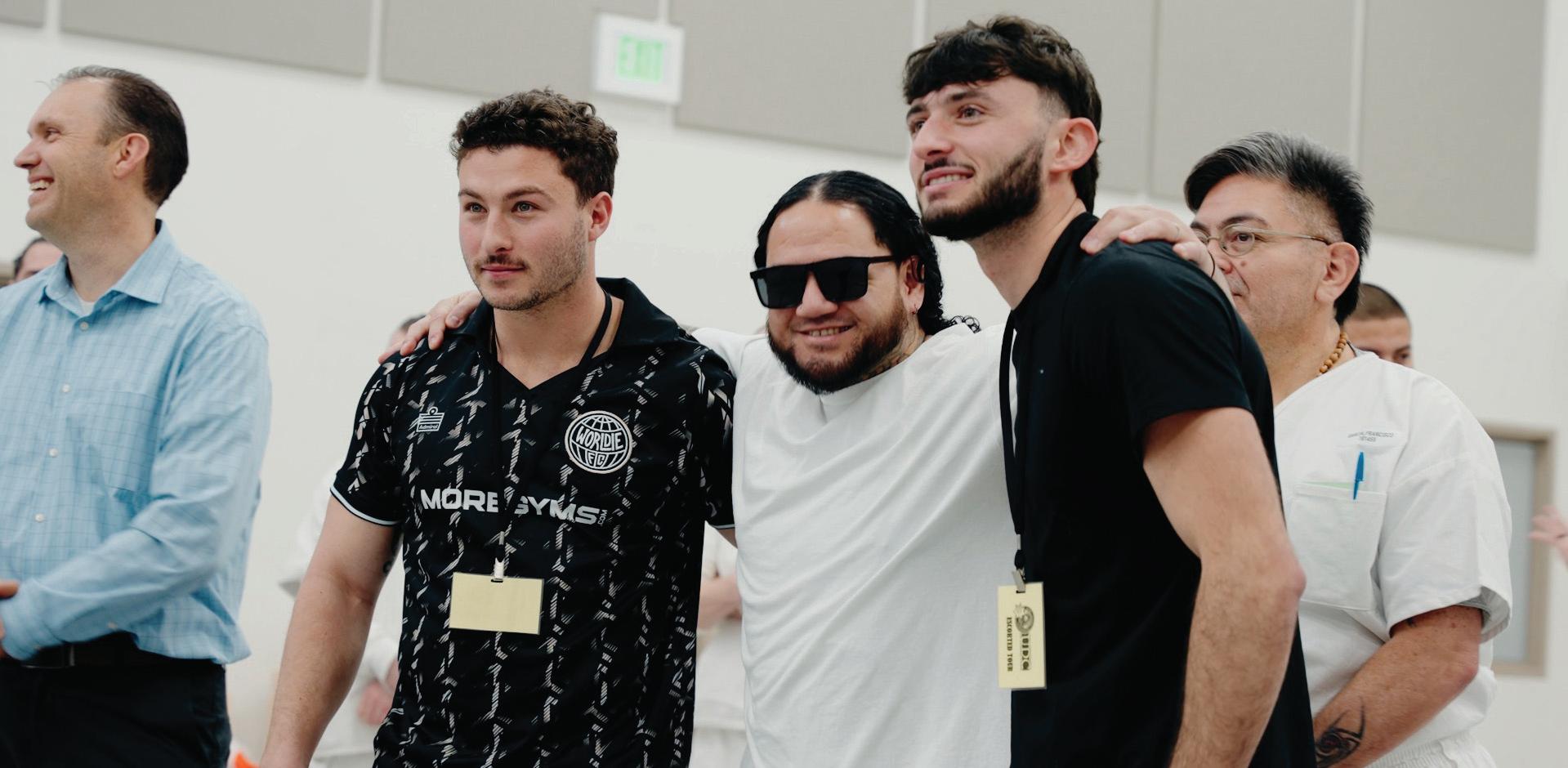
By Israel Archie SENIOR STAFF WRITER
A lot of times people associate prison with the stereotypical portrayals that are shown in mainstream movies and TV shows. However, a short film titled “What’s Your Excuse – Inside Utah State Correctional Facility” produced and directed by two brothers tells a different story.
Jaden Hozer, a fourthyear marketing student at SJSU, and his older brother Jacob Hozer went to the Utah State Correctional Facility in Salt Lake City, Utah this past January to direct the film.
The goal of the film was to highlight the discipline levels of inmates compared to the discipline levels of people outside prison, primarily when it comes to fitness.
“The whole idea was to show if you’re locked up (you have to have) discipline (and) you have to work out,” Jacob Hozer said.
Jacob Hozer is a co-founder of MoreGyms, according to his LinkedIn profile. MoreGyms is an app that helps users find a gym near their location that suits their needs, according to the app’s webpage.
The brothers also engaged in different activities with the incarcerated individuals as a way to break the ice and show the humanity of prison that people tend to forget.
entrepreneurial programs to help incarcerated people become independent, according to the organization’s webpage.
The incarcerated people with the Defy Ventures program are known as
The brothers were able to get inside the prison and film thanks to the Executive Director of Defy Ventures John Jackson.
“I am very grateful to Jacob and Jaden for the massive effort that it takes
who are incarcerated experience or who those people are.”
Jaden Hozer recalled many of the entrepreneurs in training having various talents and skills that most people outside might not.
“So many of them were talented,” Jaden Hozer said.
them from even continuing. Jacob Hozer mentioned a situation last year where they lost their creative director because he went to work for another company.
What most of society sees is the TV shows and the movies that are not accurate. They are not accurate portrayals of what people who are incarcerated experience or who those people are.
John
Jackson Defy Ventures executive director
“We hung out and did this big circle thing; it’s kind of like (a) game called “Where The Wind Blows” people play at a camp a lot,” Jacob Hozer said. “One person would go in the middle and they’d point out another person and say ‘I appreciate you because of this’ or something.”
The short film was a collaboration between MoreGyms and Defy Ventures, which is an organization that has
entrepreneurs in training or “EITs” who participate in these programs to learn how to start a business and become successful outside of prison, according to the same source.
“People on the outside call these guys prisoners, inmate(s), monster(s), whatever, but to us we referred to them as EITs –which is entrepreneurs and training (because) that was the program they were in,” Jacob Hozer said.
to get into prison for a day, film for a day and make themselves extremely vulnerable,” Jackson said.
Jackson encourages audiences to watch the film to get an accurate depiction of what prison is like and how incarcerated people interact.
“What most of society sees is the TV shows and the movies that are not accurate,” Jackson said.
“They are not accurate portrayals of what people

“This one dude had this notebook full of different drawings and sketches, there was one of Pop Smoke and Nipsey Hussle which was really cool (and) another guy said he was able to code.”
As for the process of shooting the film, Jaden Hozer came to the realization that people on the outside tend to not be appreciative of what they have.
“I don’t think people realize how blessed they are in terms of just waking up every day in their bed, having access to well water (and) having food; they said the food was awful,”
Jaden Hozer said. “A lot of people try to say what they don't have and instead they should really be focusing on what they have, so that's kind of what I took away.”
While the film is set to release sometime this week according to Jaden Hozer, there were some difficulties that the brothers ran into during this project, discouraging
In addition to that, the brothers were originally supposed to collaborate with NELK, a Canadian YouTube channel, but the YouTubers dropped the deal with the brothers, further prolonging the film production, according to Jacob Hozer.
The channel posts entertainment content including vlogs, pranks and other activities, according to NELK’s YouTube page.
“We were kind of screwed for a little bit (and) that was really discouraging for me,” Jacob Hozer said. “Then I graduated college and everything started to (pick) back up,”
Jaden Hozer expressed his gratitude for the setbacks and acknowledged that it all worked in favor of the project.
“It was a blessing in disguise that it has been prolonged for this long,” Jaden Hozer said. “It was a small gym (and) if NELK was in, it wouldn’t have been as intimate with the EITs.”
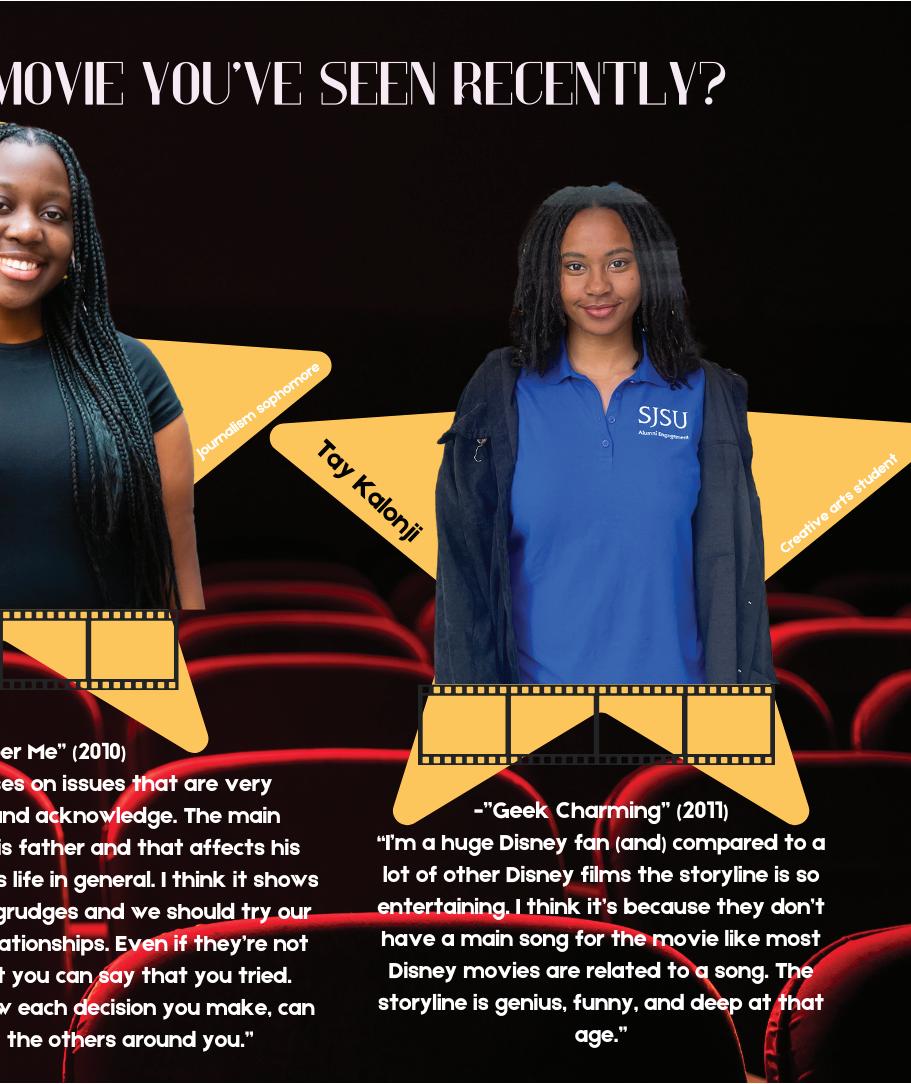
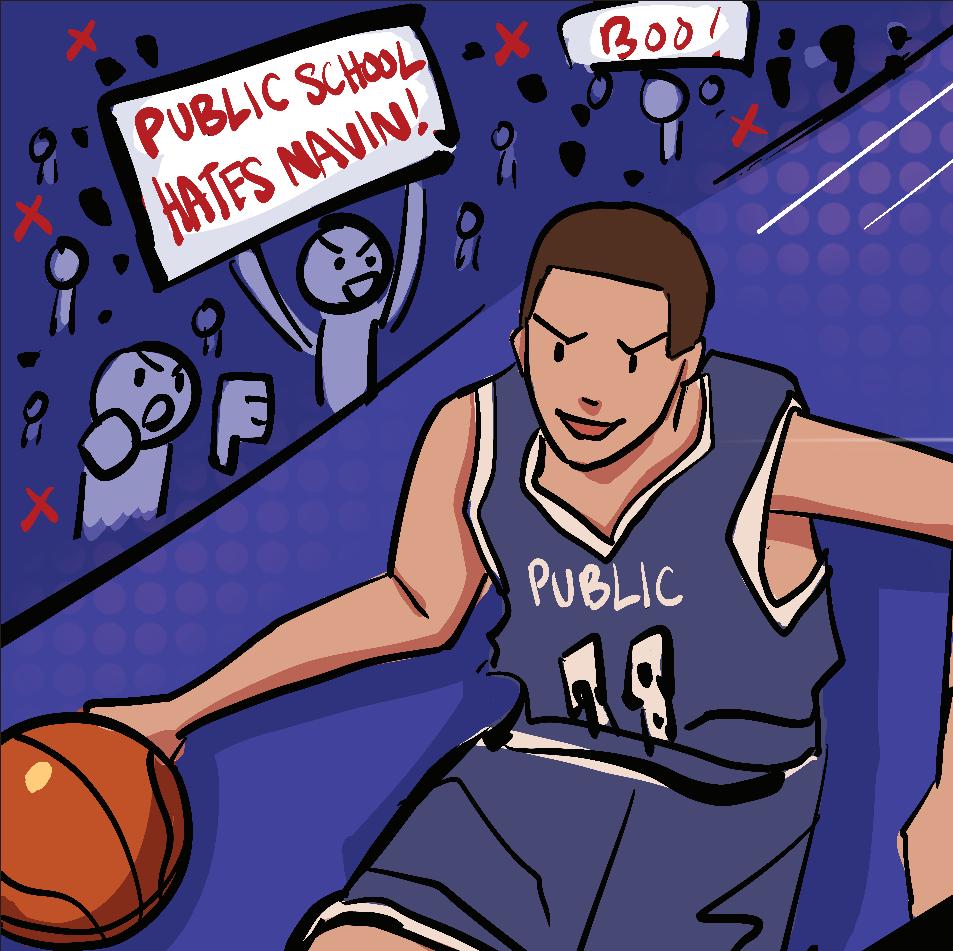

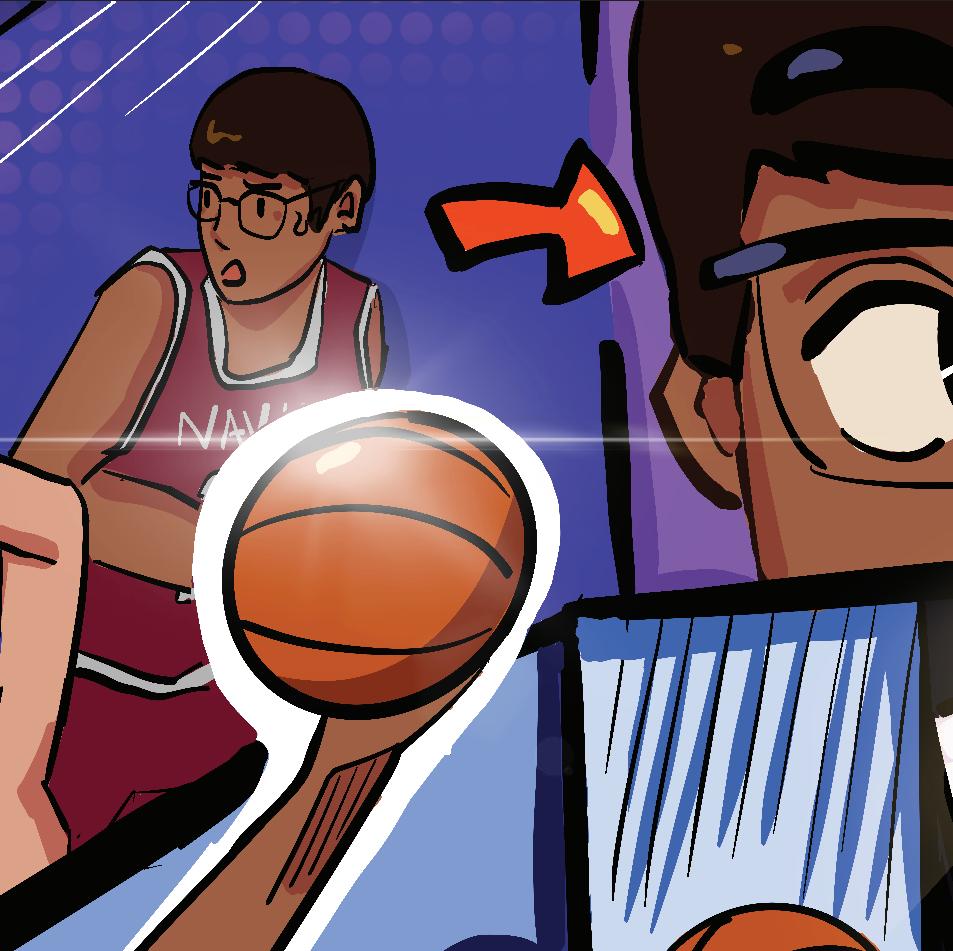
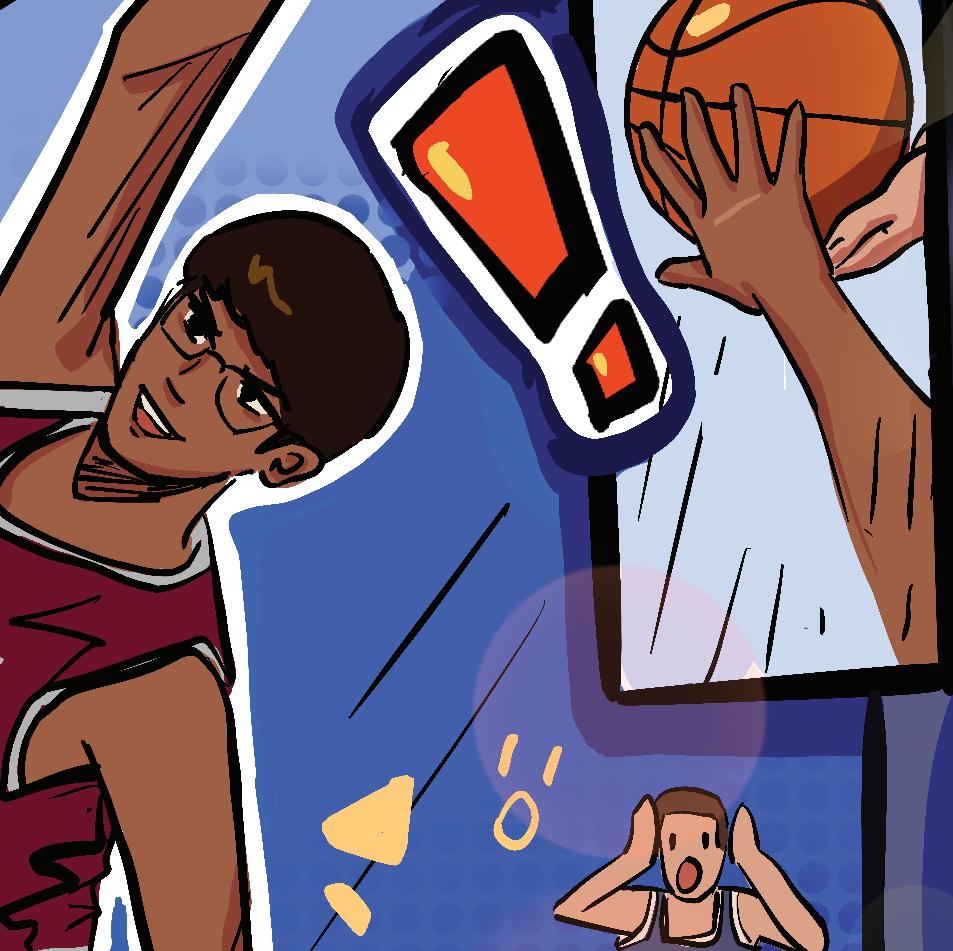
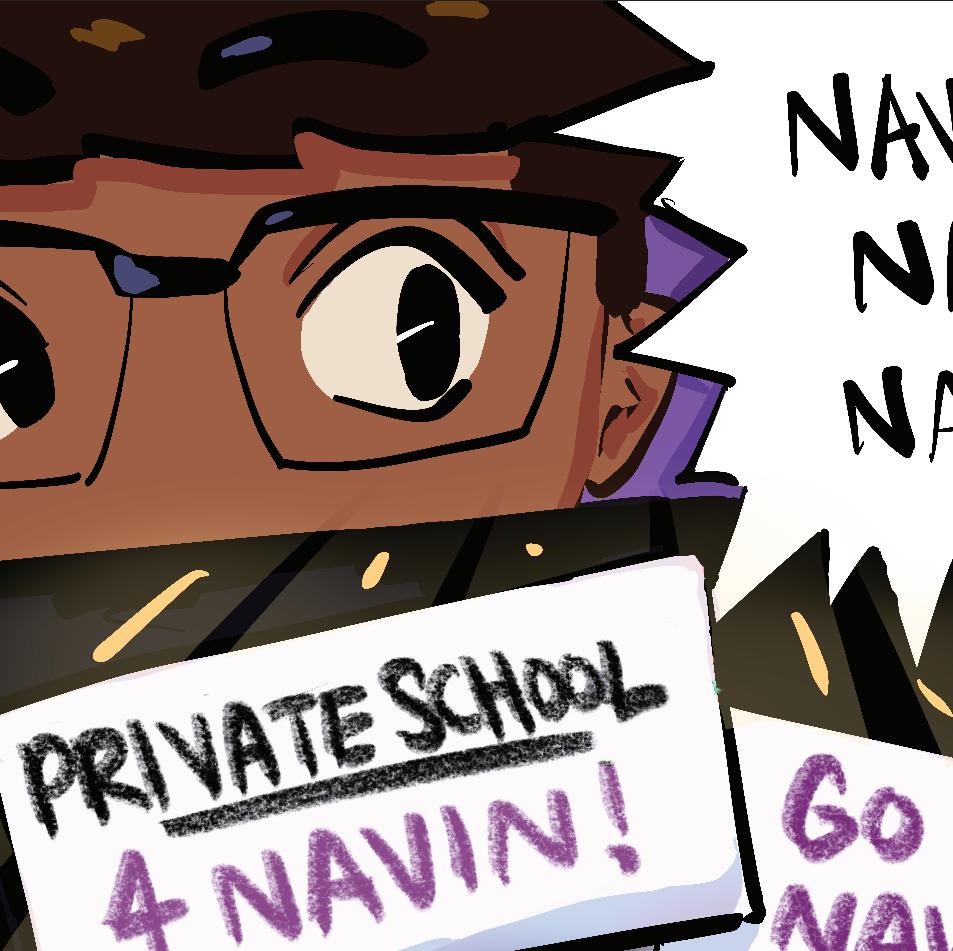




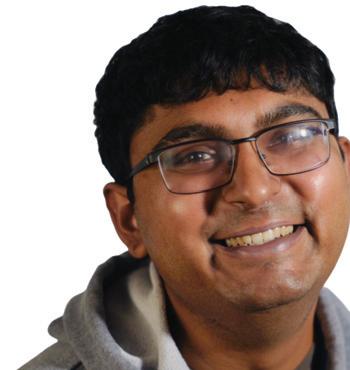

Navin Krishnan CONTRIBUTOR
Karma is a funny thing. It makes me question if I’m doing everything right or if I’m doing everything very, very wrong. Sometimes I wonder if everything I did wrong comes back to haunt me or if I deserve all the punishment I’ve gone through.
When I was a teenager, the cycle of being rejected and questioning my fate overwhelmed me.
As I grew older, I realized being called racist and homophobic slurs and having my backpack thrown in the dumpster in public school constantly isn’t just “karma.”
As I grew into my thick skin and learned to live with hating myself, I also learned my own self-consciousness was something that was the cause of my environment, not who I am.
After being the target of bullying and constant negativity, I decided enough was enough.
When I was just a sophomore in high school, I made up my mind that I just couldn’t deal with the stress that came with trying to fit in.
I decided to leave my public school for a small
How the public and private school systems shaped my self-esteem as an adult
private school outside of town.
I left a place of constant negative energy, social turmoil and the center of bullying for a whole new experience that opened my eyes.
When I was introduced to my future campus, I immediately began to fit in. It was a welcoming atmosphere and I quickly felt the sting of bullying fade away.
I wasn’t sure if I wanted to make such a big change. I begged myself to continue to go to public school.
But in private school, it was as if I had ventured to a cave and finally saw sunlight.
Back in public school, I had grown fearful of
The year before, I was so self-conscious of my body that at times I would skip lunch to go play basketball at the outdoor courts in public school. Sometimes, although I was underweight, I tried not to eat in public.
But as I took a tour of the new private school, I noticed everyone laughing together, not being laughed at. Everyone had a smile on their faces and nobody was sitting alone.
Then it happened. My shadow, or the student who introduced me to the school, mentioned the magic word: “basketball.”
He walked me through the school’s new state-ofthe-art gym and told me everyone was allowed to play anytime class was not
My shadow then took me to the school’s basketball head coach and the way he greeted me was like a weight lifted off of my shoulders.
There was a simple nuance in the social order of the new school. For the first time in my education, there was no totem pole or hierarchy. There was no superiority based on grades, ethnicity, social status or even physical stature.
For the first time in my life, everyone I met went by the motto of respect, acceptance and dignity.
I felt at home. I felt welcomed. I felt respected.
After spending the day at my school, I rushed home to my parents and
As I grew older, I realized being called racist and homophobic slurs and having my backpack thrown in the dumpster in public school constantly isn’t just “karma.”
what others thought of me. I suffered from low self-esteem because of the constant shaming and bullying I had to go through in public school.
in session. This was a big change because, in public school, only the players were allowed to play in the school’s gym. That was it. I was sold.
urged them to let me leave my mess of public school for this new haven.
When I went to my teachers and instructors at public school to try to get their help, they would seldom listen and didn’t understand my situation.
Holly Rosenkrantz, a U.S. News and World Report writer, wrote about private schools’s tolerance of bullying versus public schools’s tolerance in a Dec 21, 2021 article.
In the same article, Dewey Cornell, an education professor at the University of Virginia
and expert on bullying said private schools have more choice in who they enroll and are able to remove students who are disobedient, having more capacity to exert more control over bullying compared to public schools.
“Bullying is a ubiquitous social problem seen in nearly all schools, public or private,” Cornell said.
A couple of weeks later, I finally had my prayers answered. I was accepted into my new school and I finished a semester, for once, without a target on my back.
I decided to never look back. I was done with public school. I could sleep in peace, not giving a damn about my body or what other people thought about me.
Around a couple of months, after school began, I got a surprise in the mail. The same head coach who greeted me with respect and decency mailed me an invitation to the varsity basketball tryout.
When I attended the first day of tryouts, something incredible happened. I could play basketball feeling like myself and not having to be self-conscious about my body or what anyone else thought of me. I could just pick up the ball and play.
Contrary to my introverted nature, for once, I was able to talk to everyone at the tryout as equals. Instead of trying to shut everyone out, I could soak in the atmosphere.
Weeks later, I got a call from the school’s athletic
department. I remember quivering, waiting after the pause from the trainer.
“You’re on,” he said. That, to be perfectly honest, was the last time I trembled outside of the classroom. From then on, it was history. I finally found my home.
I realize not everyone shares the same perspective on public and private school, but I found a place I could call home and not have to worry about the pressure of being popular and dealing with the social imbalance that comes with it.
To me, bullying can come from any setting and associating school with a toxic environment felt like a ticking time bomb that I didn’t know I could have just left at any point.
One thing I always loved about my private school experience is the way my new school’s students treated me with consistent respect. Whether I was a shadow, a student, or a basketball player, the faculty and students never hesitated to greet me with a smile and treat me like family. Everything just clicked and I didn’t even need to change anything about myself. Not my clothes, my grades or the way I walk and talk.
I realized karma doesn’t always have to be something that comes back to bite you in the ass. My pathway through the eye of the storm is something that taught me that change is a journey, not a destination.
I just needed to feel respect and to feel at home. I just needed to believe and now I believe in myself.